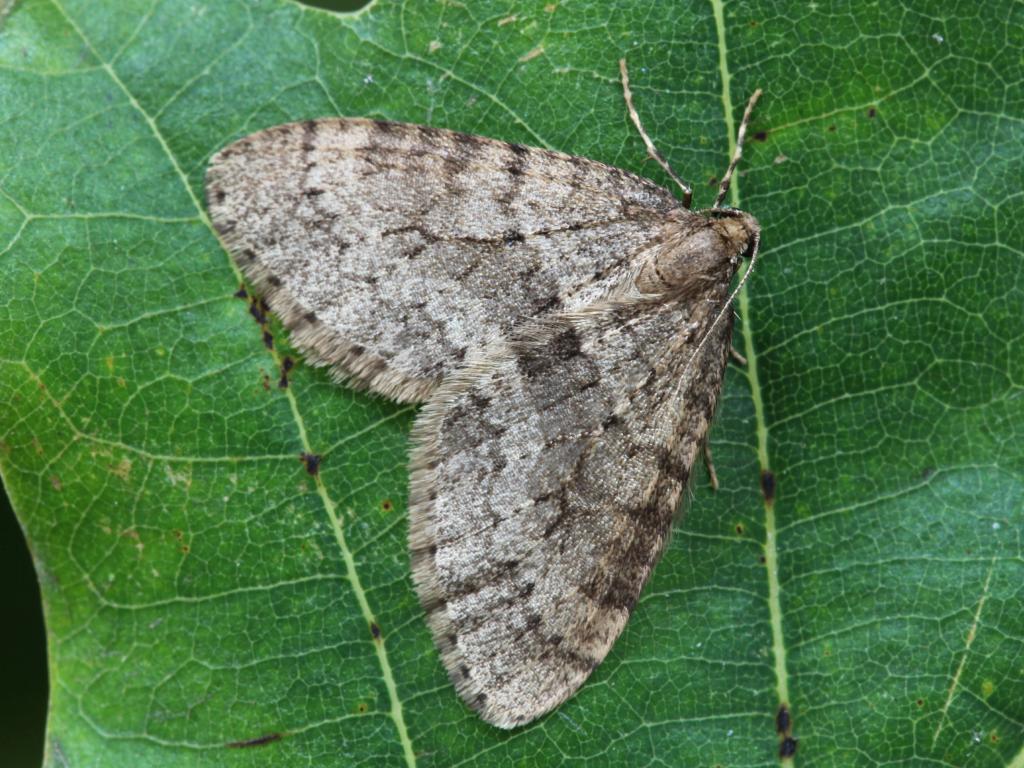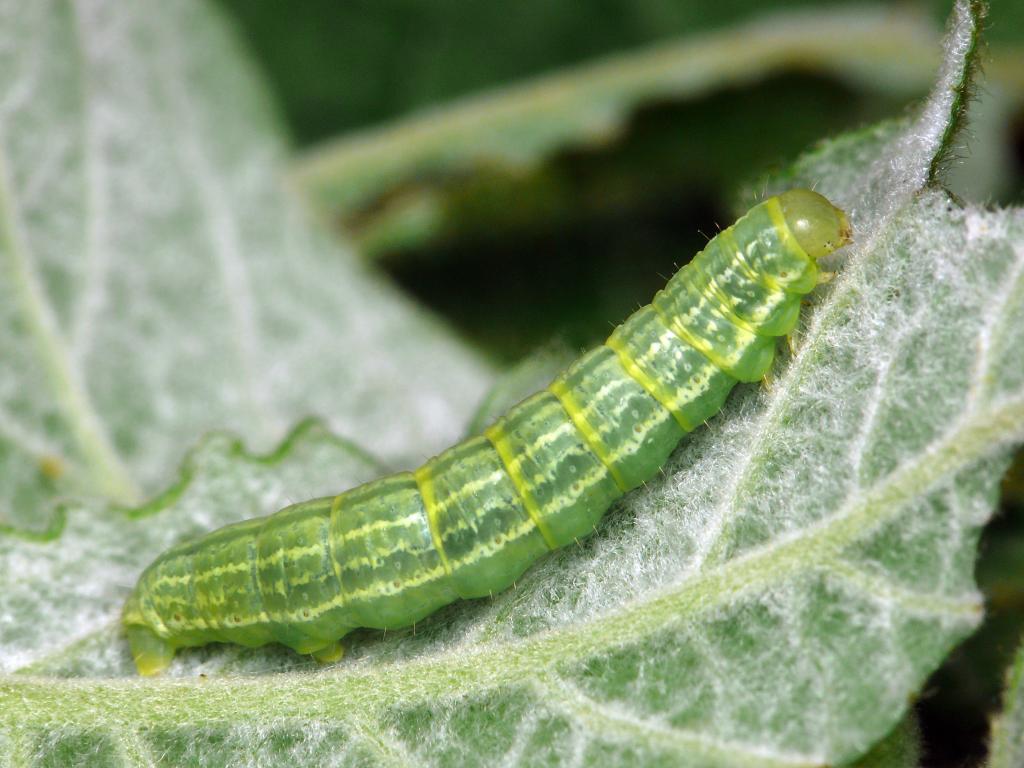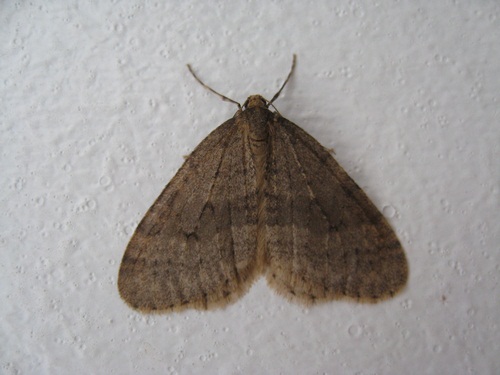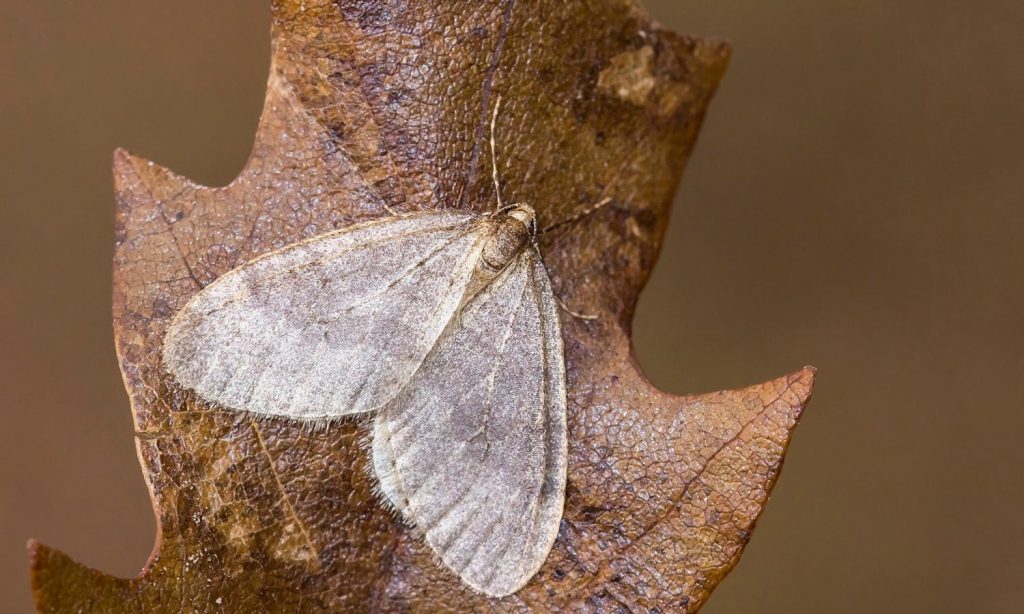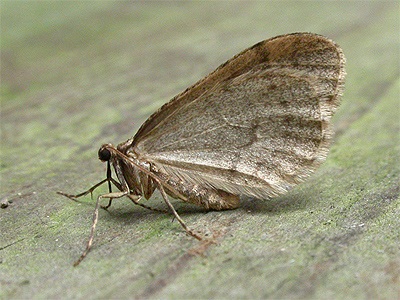Winter Moth (Operophtera brumata)
Winter moth is a Geometer moth of the Geometridae family abundantly found in Europe and parts bordering the Near East region. They exist as invasive species in North America too, where the first infestations occurred as early as the 1930s in Canada and Novas Scotia. This is one of the species of the butterfly and moth family where adults actively roam around between the late fall and early winter period. The use of the endothermy mechanism helps them warm their body and survive in chilling temperatures.
butterfly-conservation.org
Scientific Classification
- Family: Geometridae
- Genus: Operophtera
- Scientific Name: Operophtera brumata
Description and Identification
Caterpillar
The larva is tiny, not more than 0.25 cm long, having a blackish body upon hatching. As it matures, its size increases to about 2 cm, attaining a pale green coloration with a longitudinal stripe running across. This moth closely resembles the Bruce spanworm, spring cankerworm, and fall cankerworm in appearance and feeding pattern.
The young larva mostly eats the expanding leaf buds and eventually the foliage of their host plants.
The winter moth caterpillars are mostly preyed upon by some parasitic species, particularly a specific wasp (Agrypon flaveolatum) and fly (Cyzenis albicans)
Pupa
The pupal phase is long, starting from late May lasting till September or even up to the early winter months, i.e., November or December. One disadvantage of the long pupation span is that it makes the pupa easy prey to its parasitoids and other predators.
Adult Moth
Sexual Dimorphism: Present
The males have wings and can fly, while the wingless females have only short wing stubs, incapable of flying. Moreover, females are also smaller than their male counterparts.
Color and Appearance
Forewings (in males): When opened, the color varies from grayish-yellow or beige-brown with a reddish tinge and yellowish fringe. When closed, there is no significant change in the color and pattern of the forewings.
Hindwings (in males): When opened, they are pale or yellowish-grey. When closed, the color remains the same.
The edges of all the four wings have small-sized elongated scales with a hairy and fringed appearance.
The female winter moth species are brownish-grey with brown or grey wing stubs and dark bands.
Average Wingspan: 2 – 2.8 cm (in males while females appear smaller)
Flight Pattern: Erratic
Season: November – January
Eggs
They are initially green and then reddish-orange. When ready to hatch, the eggs become bright blue or bluish-black.
Quick Facts
| Distribution | Native: Europe, parts of West Asia, Turkey, and Egypt Invasive: North America (Nova Scotia, Canada, Oregon, Vancouver, Massachusetts, Maine, Rhode Island, New Hampshire) |
| Habitat | Near trees, shrubs, and leaves of their host plants |
| Predators | None, as most of the common predators of moths like bats, frogs or birds have either hibernated or migrated to warmer places when they are active |
| Lifespan of Adults | Not recorded |
| Host Plants | Apple, oak, hazelnut, chestnut, beech, larch, quince, poplar, pear, cherry, elm, willow, blueberry, crab apple, blueberry, and raspberry |
| Adult Diet | Do not feed |
Did You Know
- Their infestation has been known to cause harm to several trees. According to a Massachusetts study, the winter moth’s defoliation has lessened the oak tree’s growth rate to about 47%.
- It was accidentally introduced in Oregon during the 1950s and British Columbia’s Vancouver in the 1970s.
.
Scientific Classification
- Family: Geometridae
- Genus: Operophtera
- Scientific Name: Operophtera brumata

